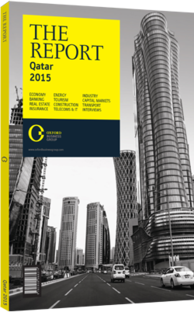Stephen Anderson, Managing Partner, PwC Qatar, on the state’s focus on delivery and value

This has been another turbulent year for the region, with the dramatic decline in oil prices and continued geopolitical instability on the GCC’s borders. Making predictions on oil prices can often be a fool’s errand. As recently as November 2014, the consensus price for the end of 2015 was around $95-100 per barrel, and I am sure many of us are embarrassed by predictions we made at the time. That said, we believe that Qatar is one of the best-placed GCC nations to weather the current environment of lower hydrocarbons prices. As it did during the global financial crisis, Qatar may though respond to prevailing conditions by tightening its belt and reappraising certain projects. With the FIFA World Cup taking place in the winter of 2022, the focus going forward is on delivery and value for money. Qatar has enjoyed significant economic growth, with real GDP increasing by 10.7% per annum since 2008. It is now one of the richest nations in the world, with GDP per capita exceeding $100,000 at purchasing power parity exchange rates. The nation has weathered global economic instability by taking advantage of its vast natural gas reserves, producing the highest levels in the GCC at 159bn cu metres in 2013 and becoming the largest liquefied natural gas (LNG) exporter in the world. Furthermore, Qatar has managed to contain domestic price pressure by setting aside over $300bn worth of export revenues in its sovereign wealth funds and managing a proactive interest rate policy. In this context we expect real GDP to grow by 6.5% in 2015, and to average around 6.2% per annum between 2016 and 2019. This growth is underpinned by three main factors. Firstly, Qatar’s resilient oil and gas sector. Qatar maintains a leading global position in the LNG market. Some decoupling of gas and oil prices in the aftermath of the Japanese earthquake of 2011, demand for the cleaner-burning fuel in Europe and Asia, and the squeeze on marginal producers suggests that its premier position could be stable into the medium term. Secondly, economic growth has been supported by a strong expansion of the working age population. The population is projected to grow by an additional 10% per year, reaching 2.5m in 2018 due to the continuous influx of expatriate workers. The final factor underpinning growth is the substantial expansion of the non-oil and gas sector driven by government expenditure, itself expected to continue expanding strongly following an 18% average annual growth rate between 2008 and 2013. These predictions are further underpinned by a relatively stable inflationary outlook, and Qatar still has plenty of excess debt capacity to draw on as required.
In 2014, I provided a viewpoint on target growth sectors, such as infrastructure, telecoms, financial services and energy, all of which continue to provide a strong pipeline of opportunities. For 2015, I would add health care and education. With the launch of Seha, Qatar’s national health insurance scheme, and the ongoing prevalence of lifestyle diseases in the country, there are increasing opportunities for private sector involvement in health care. In education, competition for school places is intense and, again, the authorities are looking to open the market to yet further private sector participation.
Although we remain positive about the future, Qatar is not immune from global events. The medium-term prognosis for global gas supply will likely place downward pressure on prices, with increases in supply from Australia and the US in particular. Even though we project inflation to remain at manageable levels going forward, inflation volatility is a threat due to the unprecedented investment programme. Also, securing governmental revenue beyond hydrocarbons remains a challenge for Qatar. There is still a need for market reforms to improve the business environment, specifically to prevent the public sector from crowding out private firms and to re-examine labour laws. Going forward, diversification of the revenue base will be a key area.
You have reached the limit of premium articles you can view for free.
Choose from the options below to purchase print or digital editions of our Reports. You can also purchase a website subscription giving you unlimited access to all of our Reports online for 12 months.
If you have already purchased this Report or have a website subscription, please login to continue.

